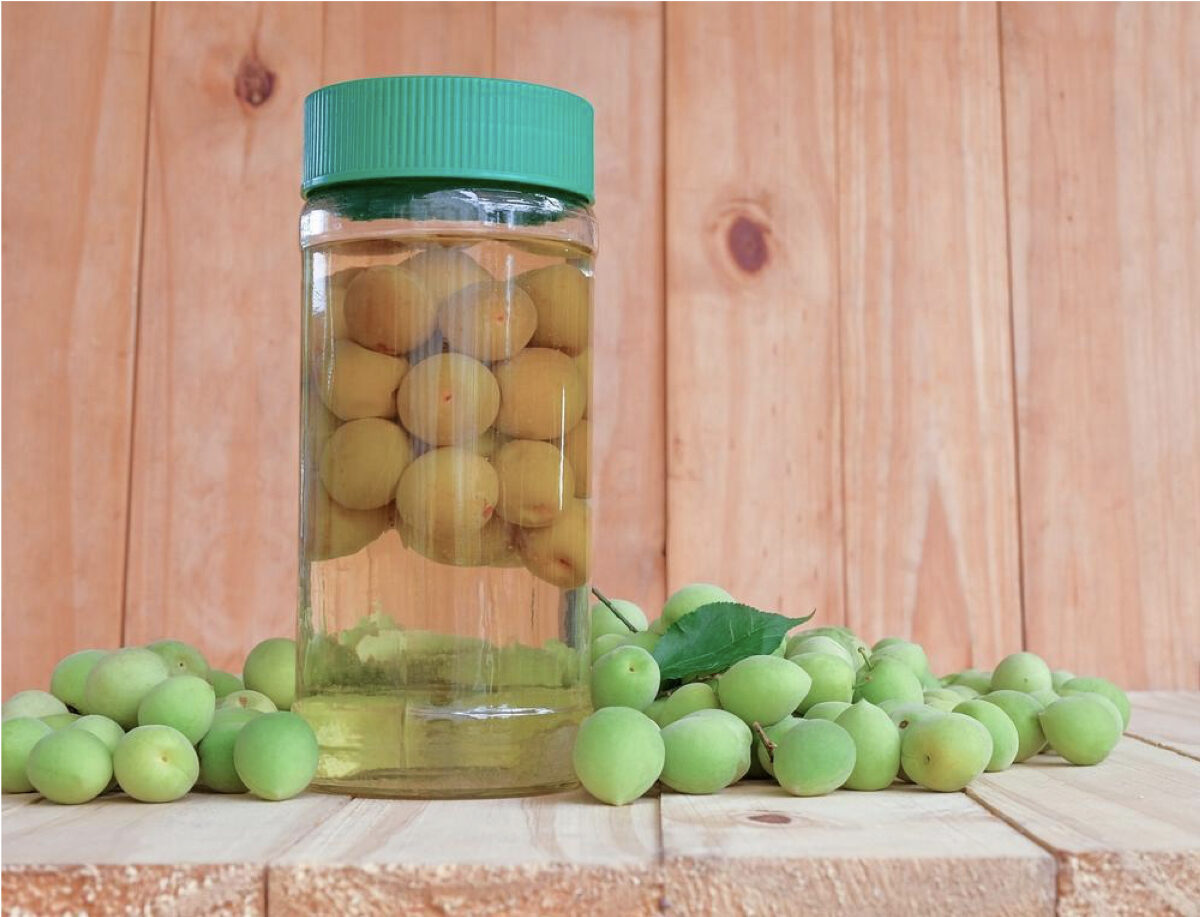


Green plum is a beloved fruit by the Japanese and is often a popular household meal ingredient.
Green plum can be therapeutic both medicinally and nutritionally with many health benefits, such as aiding digestion and enhancing beauty. The fruit also has anti-fatigue and anti-inflammatory properties.
Reiko Iga, a Japanese chef tells us how to make homemade plum wine and dried plums, and a Japanese doctor introduces the health benefits of enjoying plum wine.
Green plum is a fruit of the Rosaceae prunus family. Grown in the hills and forests of China and other surrounding countries, the green plum is described as sweet and juicy with a crisp texture, rich in vitamin C. Used as a medicinal food green plum is high in citric acid, flavonoids such as threonine, and other nutrients essential to support the body’s metabolic function.
Green plum helps regulate protein composition in the human body while preventing and aiding in curing cardiovascular, urinary, and digestive diseases.
Iga, who has owned Japanese restaurants for 20 years, shares with the Epoch Times that the Japanese people are health-conscious. “Each year, we will make plum wine at home, as well as dried plums, to incorporate into our daily diet.”
What is plum wine? The Brewery Association of Japan introduces how to incorporate green plum, alcohol, and sugar to make plum wine. Plum wine will only be refined after marinating and aging for months to years. When it is ready, green plum wine contains excellent medicinal value.
Green plum wine, also known as yomeishu, is a herbal tonic. When enjoying a little daily, it alleviates fatigue and improves health.
Iga said you could also make your own green plum wine at home, mixing and matching various ingredients based on your taste.
Ingredients: 1 kg green plum, 600g-800g rock candy, 1.8 L shochu (distilled rice wine)
Directions:
Dr. He Muxia has been practicing in Japan for over 30 years and graduated from the Shanghai University of Traditional Chinese Medicine.
Plum wine contains many vitamins, amino acids, citric acid, organic acids, and minerals such as potassium, calcium, and iron. Dr. He lists the following health benefits plum wine has for our overall health:
The cellulose and organic acids in green plum wine promote gastric acid secretion and intestinal peristalsis, effectively relieving constipation.
The sweetness and sourness of the plum wine can stimulate parotid secretion in the salivary glands. While plum wine strengthens the metabolism of blood vessels and skin tissue, it also delays aging, smoothes uneven skin, and gives it a rosy glow.
The high citric acid content in plum wine activates and accelerates metabolism. The activity helps decompose fatigue substances in the human body, relieving stress and reducing fatigue.
The large amount of organic acids in plum wine is antibacterial and anti-inflammatory with a curative effect on diarrhea and increases liver detoxifying functions.
One thing to note, although plum wine has countless benefits, Dr. He warns people with stomach disorders, diabetes, liver deficiency, or alcohol allergy should avoid consuming plum wine.
Iga shows us how to make homemade dried plums—nice for those who should not consume alcohol and everyone.
Ingredients: 1 kg green plum, 150g salt, 200g rock candy or honey (you can increase the sweetness based on your preference)
Directions:
Iga also recommends switching up the recipes based on your liking. For example, If you like perilla plums, you can prepare your perilla leaves by rubbing them with some salt. Squeeze out the excess water, then air dry the leaves before soaking them with the plums in the container.


